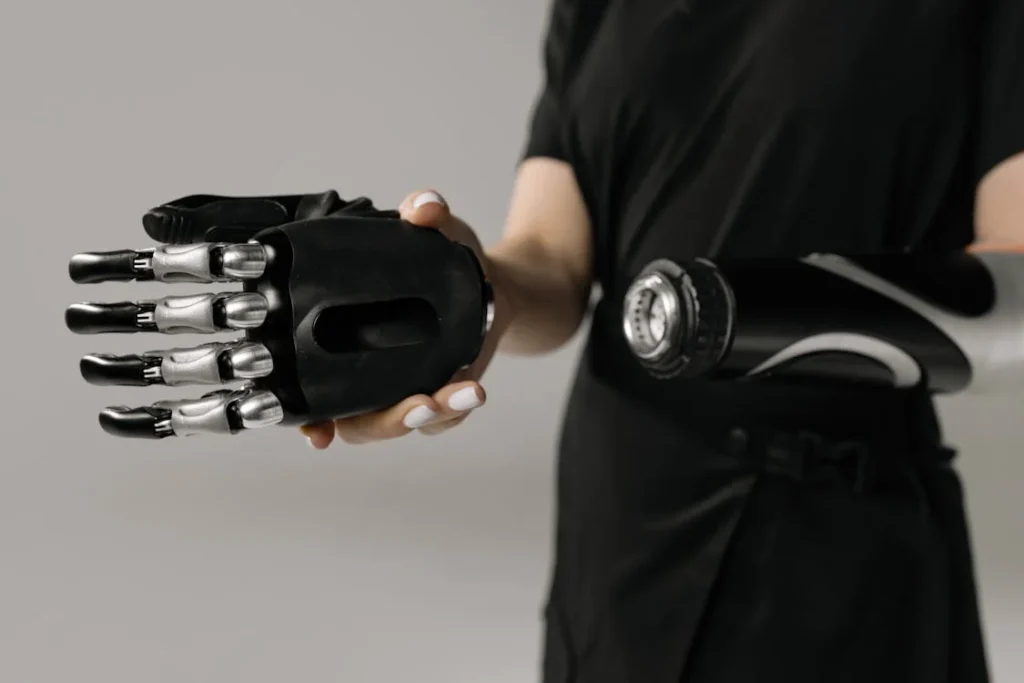Losing a hand or an arm is life-changing, but the right prosthetic can restore function and confidence. While getting a prosthetic limb is a big step, learning how to use it properly is just as important. It takes time, patience, and the right training to make it feel like a natural part of you.
Many people expect to put on a prosthetic and use it instantly, but it doesn’t work that way. Your body and brain need to adjust. Simple tasks like picking up a cup, buttoning a shirt, or using a phone require practice. The good news is, with the right approach, you can regain independence and do everyday activities smoothly.
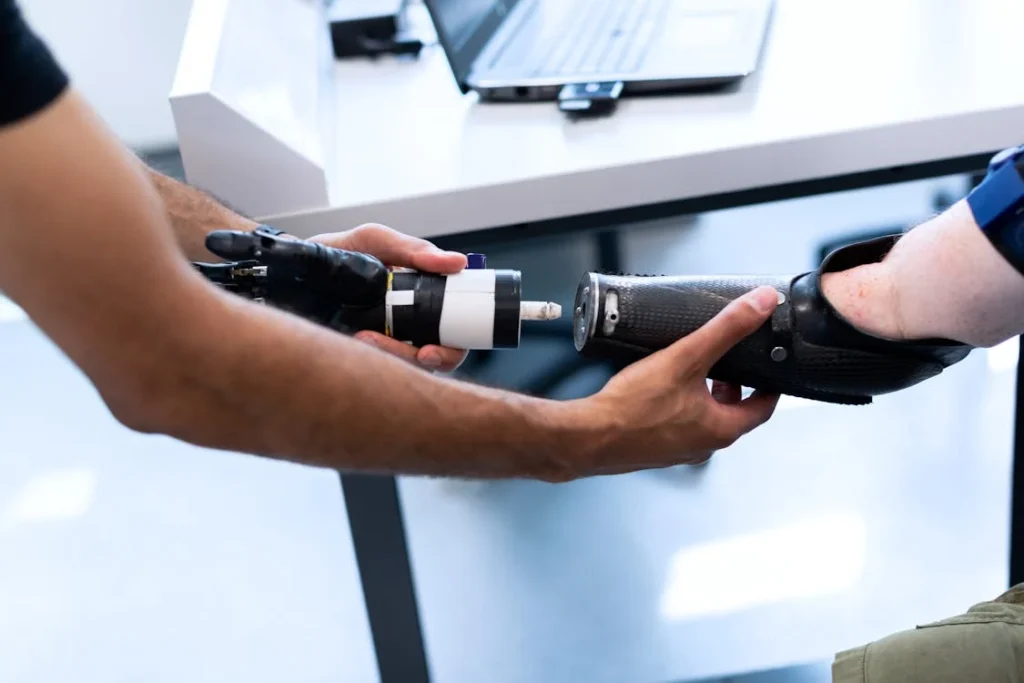
Understanding the First Steps After Getting a Prosthetic
The first few days with a prosthetic hand or arm can feel overwhelming. Your brain is used to controlling your natural limb, so adjusting to an artificial one takes effort.
The key is to be patient with yourself. It’s completely normal to feel frustrated or even discouraged at first.
Every user experiences some level of discomfort or awkwardness, but with time and practice, your prosthetic will start to feel like a natural part of you.
One of the most important things to focus on in the beginning is fit and comfort. A prosthetic that doesn’t fit properly can cause pain, irritation, or even blisters.
Working closely with your prosthetist to ensure a proper fit is crucial. If anything feels uncomfortable, don’t ignore it.
Small adjustments can make a big difference in how well you adapt. A well-fitted prosthetic should feel secure but not too tight, allowing for smooth movement without unnecessary strain.
Once the prosthetic feels comfortable, you’ll start learning basic movements. Your muscles, nerves, and brain need time to figure out how to control it.
If you have a myoelectric prosthetic, your muscles will send signals to operate the device. This process might feel strange at first, especially if your muscles are weak from lack of use.
Simple exercises, like opening and closing the hand repeatedly, help build strength and coordination. For body-powered prosthetics, you’ll need to adjust to using a harness or cable system.
This involves shoulder or upper-body movements to control the prosthetic’s function. It may take some trial and error, but regular practice will improve precision and control.
Developing Muscle Memory and Control
Training your body to use a prosthetic effectively is similar to learning how to ride a bike. At first, every movement feels awkward and deliberate, but with practice, it becomes second nature.
The secret lies in repetition. The more you practice certain movements, the more natural they become. Your brain starts to create new pathways that make controlling the prosthetic easier over time.
Occupational therapy plays a huge role in this stage. A trained therapist will guide you through exercises that strengthen your muscles and improve control.
These exercises may feel simple, like picking up small objects or moving your hand in different directions, but they are essential for building coordination. If you have trouble with certain movements, your therapist can offer strategies to make them easier.
Another important part of training is learning how much force to use. At first, you might squeeze objects too hard or not hard enough.
If you’re using a myoelectric prosthetic, it takes time to get used to how much muscle signal is needed for a certain action. Your therapist may suggest practicing with different objects—soft, hard, heavy, and light—to help you understand how to adjust your grip.
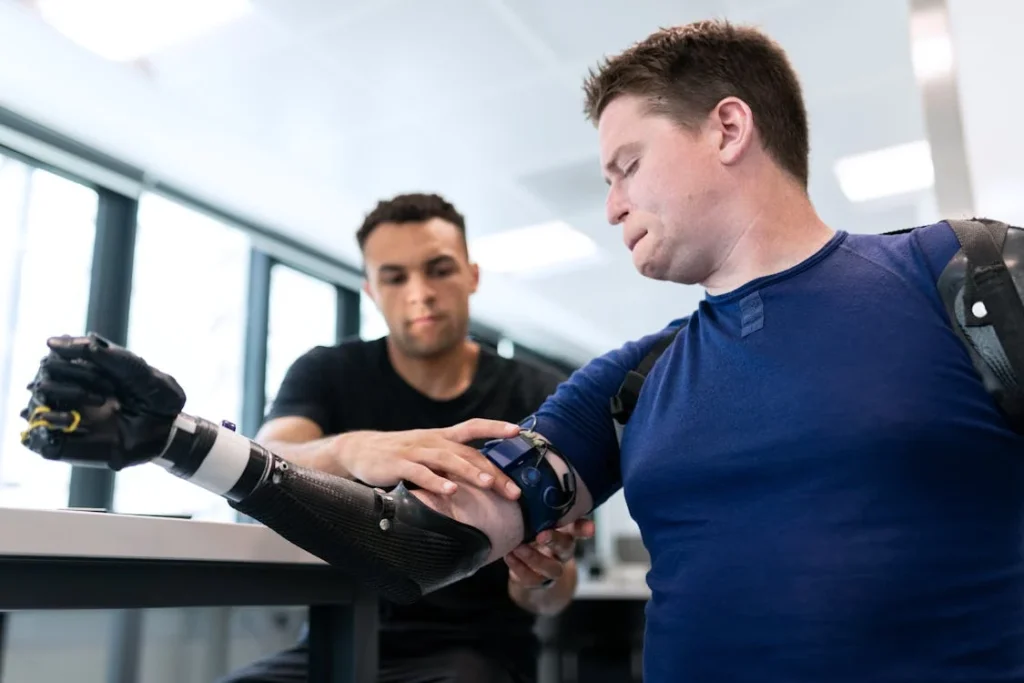
Mastering Everyday Tasks with Your Prosthetic
Once you develop basic control over your prosthetic, the next step is applying those skills to daily life. The goal is to make movements feel smooth and natural, so you can go about your routine without constantly thinking about every action.
This stage requires patience, but small improvements each day will add up.
Handling Objects with Precision
Learning how to hold, lift, and manipulate objects takes practice. In the beginning, it may feel like your prosthetic is either too weak or too strong, making it hard to grip things properly.
One of the best ways to improve is by working with different types of objects. Try picking up a water bottle, a pen, or a soft sponge to get a feel for how much pressure is needed.
If you’re using a bionic prosthetic, muscle control will determine how firmly the hand closes around an object.
Practicing small, repetitive motions will help refine these movements. A body-powered prosthetic relies on shoulder and upper-body strength, so it may take time to coordinate these movements smoothly.
Fine motor skills are another challenge. Tasks like buttoning a shirt, using a phone, or holding utensils require precise hand positioning.
A great way to improve is by setting aside time each day to practice small, controlled movements.
If you struggle with certain tasks, adaptive techniques—like using a stabilizing surface or gripping aids—can make things easier.
Using Your Prosthetic for Two-Handed Tasks
Most everyday activities involve both hands working together. Even if you have a prosthetic on one side, training both arms to work in sync is crucial.
In the beginning, you may rely more on your natural hand, but over time, your prosthetic will become an active part of your movements.
Cooking is a great way to practice two-handed coordination. Tasks like chopping vegetables, stirring a pot, or holding a plate while using a fork help train your body to use the prosthetic naturally.
At first, these activities may take longer than expected, but with persistence, they will become second nature.
Household chores are another excellent training tool. Activities like folding clothes, sweeping, or carrying grocery bags require different levels of grip strength and control.
The more you engage in these everyday actions, the more confident you’ll become in using your prosthetic efficiently.
Adapting to Different Environments
One of the biggest challenges of using a prosthetic is adapting to different situations. What works at home may not work as easily in public settings, so building confidence in various environments is important.
For example, navigating a busy market while carrying bags requires awareness of how your prosthetic moves. If you’re at work, using a keyboard, writing, or shaking hands may take some adjustments.
Social situations can also feel different at first, but over time, you’ll develop a sense of ease and confidence in how you use your prosthetic around others. If something feels difficult or uncomfortable, small modifications can help.
Adjusting how you carry items, changing your grip technique, or using assistive tools can make daily tasks easier. The key is to keep experimenting and finding what works best for you.
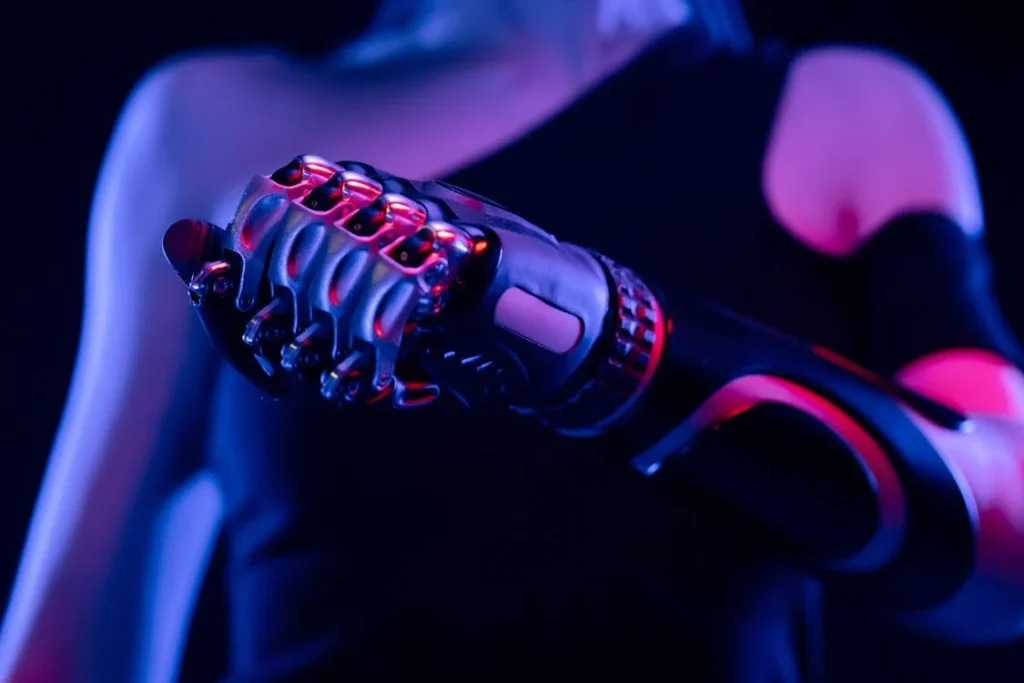
Strengthening Endurance and Reducing Fatigue
As you begin using your prosthetic more regularly, you may notice that your arm feels tired or sore, especially in the early stages.
This is completely normal. Your muscles, joints, and even your brain are working harder than before to control the prosthetic.
Over time, as you build strength and coordination, fatigue will lessen, and movements will become more natural.
Building Strength for Better Control
Your residual limb and surrounding muscles need to be strong to support extended prosthetic use. Many people experience muscle atrophy after an amputation, so rebuilding strength is an important part of adaptation.
Regular exercises focusing on your shoulders, upper arms, and back can improve endurance and make prosthetic use easier. Occupational therapy often includes resistance exercises, stretching, and targeted movements designed to enhance control.
Lifting small weights, squeezing resistance balls, or performing simple arm movements can help improve overall muscle function. Strengthening the core is also beneficial, as it helps with posture and balance, making prosthetic movements smoother and more efficient.
Managing Discomfort and Preventing Strain
Wearing a prosthetic for long hours can sometimes cause discomfort, especially in the early weeks of use. Skin irritation, muscle soreness, or pressure points are common issues that can be managed with the right adjustments.
If you experience persistent discomfort, checking the fit of your socket is crucial. A prosthetic that is too loose or too tight can cause unnecessary strain.
If something doesn’t feel right, consult your prosthetist for adjustments. Even small modifications can make a big difference in comfort.
Taking short breaks throughout the day can also prevent fatigue. If you notice soreness in your residual limb or surrounding muscles, gentle stretching or massaging the area can help.
Some users find it helpful to remove the prosthetic for brief periods to allow their skin to breathe and relax before continuing use.
Improving Endurance with Consistent Practice
The more you use your prosthetic, the longer you’ll be able to wear it comfortably.
Just like any physical skill, endurance builds with practice. In the beginning, using the prosthetic for long periods may feel exhausting, but with time, your body will adapt.
One way to build endurance is to gradually increase the time you spend using your prosthetic each day. Start with short sessions and slowly extend them as your muscles adjust.
Integrating your prosthetic into daily activities rather than treating it as a separate task will also help you become more accustomed to using it naturally.
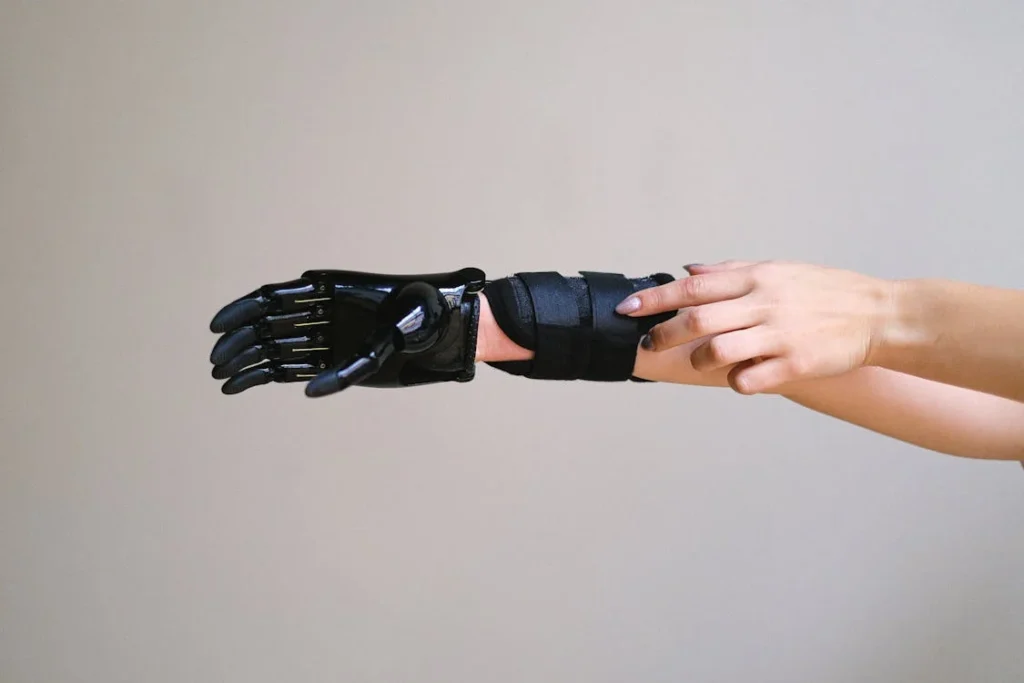
Overcoming Challenges and Staying Motivated
Adapting to an upper limb prosthetic is a journey with ups and downs. Some days, everything will feel easy and natural.
Other days, frustration may creep in, especially when certain tasks take longer than expected.
The key to long-term success is persistence and a positive mindset. Every challenge you overcome brings you one step closer to full independence.
Dealing with Frustration and Mental Barriers
It’s normal to feel frustrated when you struggle with tasks that once seemed effortless. Many prosthetic users experience moments of doubt, but pushing through these challenges is essential.
Instead of focusing on what feels difficult, celebrate the small victories—whether it’s successfully picking up a fragile object, typing faster on a keyboard, or carrying a cup without spilling.
Your brain is constantly learning and adjusting, even when progress feels slow. Some users find it helpful to keep a journal to track their improvements.
Looking back at how far you’ve come can be a great motivation boost. If frustration becomes overwhelming, taking a short break and returning with a fresh perspective can make a big difference.
Seeking Support and Learning from Others
You are not alone in this journey. Connecting with other prosthetic users can be incredibly helpful.
Support groups, online communities, and rehabilitation centers provide a space to share experiences, ask questions, and learn from those who have been through similar challenges.
Hearing success stories and practical tips from others can be both inspiring and educational. Your prosthetist and occupational therapist are also valuable sources of guidance.
If you’re struggling with certain tasks, don’t hesitate to ask for advice or modifications to your prosthetic. Small adjustments to the fit, control system, or grip pattern can make certain movements easier.
Staying Consistent and Setting Goals
Setting small, achievable goals can help maintain motivation. Instead of trying to master everything at once, focus on one skill at a time.
If you struggle with using utensils, dedicate time each day to practicing with different types of food. If writing is difficult, start with short words before progressing to longer sentences.
Rehabilitation programs, like those offered by Robobionics, incorporate gamified training to make practice more engaging. Interactive exercises help develop coordination while keeping the process fun and rewarding.
The more you practice in a structured way, the more confident you’ll become in using your prosthetic.

Making Your Prosthetic a Natural Part of Your Life
As you gain confidence in using your prosthetic, the next step is integrating it seamlessly into your daily life. The goal is to reach a point where using your prosthetic feels intuitive, rather than something you have to consciously think about.
This takes time, but with consistent use and the right mindset, it will become second nature.
Developing Routines for Easier Adaptation
Using a prosthetic efficiently requires practice, but building routines around it can make adaptation smoother. Start by making it a habit to wear your prosthetic for essential tasks, like eating, dressing, or working.
The more you rely on it for everyday activities, the more comfortable and natural it will feel.
Morning and evening care are also important. Checking your skin for irritation, cleaning your prosthetic, and ensuring a proper fit each day will help prevent discomfort and make it easier to wear for long hours.
If you notice redness, swelling, or pressure marks, addressing them early will prevent bigger issues later.
Using Technology to Improve Functionality
Modern prosthetics, like myoelectric hands, offer advanced features that improve movement and grip precision.
Learning how to maximize these functions can make daily tasks easier. Some models come with different grip patterns, adjustable strength settings, and customizable controls.
Taking the time to explore these options will help you get the most out of your device.
Robobionics’ Grippy™ bionic hand, for example, offers lightweight, ergonomic design with an advanced sense of touch. If you’re using a high-tech prosthetic, working with a specialist to fine-tune the settings will ensure the best possible performance.
Gaining Confidence in Public and Social Situations
Many prosthetic users feel self-conscious when wearing their device in public. It’s natural to worry about how others might react, but over time, you’ll realize that confidence is key.
The more you use your prosthetic without hesitation, the more others will see it as a natural part of you. If you feel nervous in social situations, start by practicing common interactions.
A firm handshake, carrying a drink, or using gestures while speaking are all small but important ways to build confidence. Over time, you’ll find that people are more curious than judgmental, and most are simply interested in how your prosthetic works.
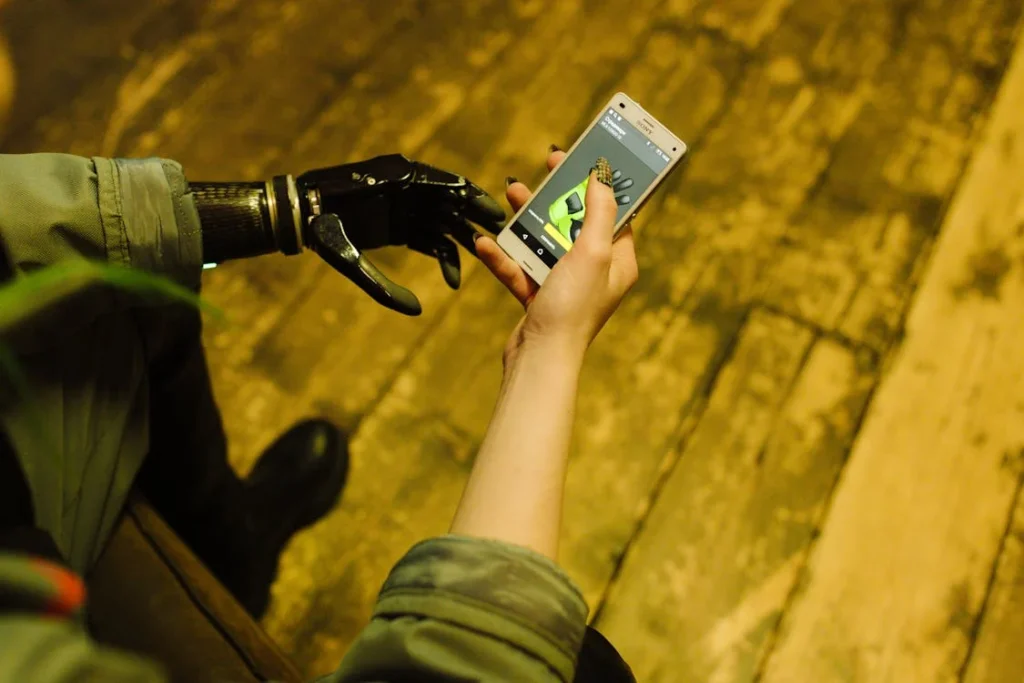
Long-Term Success: Maintaining and Improving Your Prosthetic Use
Adapting to a prosthetic is not just about learning how to use it—it’s about continuing to improve and making it a long-term part of your lifestyle.
As your skills grow, new challenges may arise, but with regular practice and proper care, you can ensure your prosthetic remains a reliable and effective tool.
Keeping Your Prosthetic in Top Condition
Regular maintenance is essential for keeping your prosthetic in good working order. Just like any other piece of technology, wear and tear can occur over time.
Checking for signs of damage, like loose components, worn-out straps, or decreased grip strength, will help prevent issues before they become major problems.
Cleaning your prosthetic daily is also important. Sweat, dirt, and dust can build up and cause discomfort or even skin irritation.
If your prosthetic has electronic components, follow the manufacturer’s cleaning guidelines to avoid damage. For mechanical prosthetics, lubricating moving parts periodically will help keep everything running smoothly.
If you notice any persistent discomfort or changes in how your prosthetic functions, scheduling a check-up with your prosthetist is a good idea.
Small adjustments can make a big difference in both comfort and usability. Robobionics offers repair and maintenance support, ensuring that users receive quick and efficient service without long wait times.
Strengthening Your Skills Over Time
Even after mastering basic prosthetic use, there is always room for improvement. Just like athletes continue training even after reaching a high level, prosthetic users can refine their skills with consistent practice.
Challenging yourself with new tasks is one of the best ways to enhance control and coordination. If you’ve mastered basic grips, try more complex movements like tying shoelaces, playing an instrument, or cooking more advanced meals.
The more you push yourself, the more natural your prosthetic use will become. Technology is constantly evolving, and keeping up with advancements can also improve your experience.
New prosthetic models, updated software, and innovative accessories can enhance functionality and comfort. Staying informed and exploring upgrades when necessary can help you get the best possible performance from your device.
Embracing Independence and a Fulfilling Lifestyle
Ultimately, the goal of a prosthetic is to give you independence and confidence in your daily life. Whether it’s returning to work, engaging in hobbies, or simply performing everyday tasks with ease, your prosthetic is a tool to help you live life on your terms.
Social acceptance and self-confidence play a big role in this journey. Over time, you’ll find that using your prosthetic in public feels completely natural.
Instead of focusing on limitations, you’ll see the possibilities that come with having a functional, well-adapted device.
If you ever feel stuck or discouraged, remember that progress isn’t always linear. Every challenge is an opportunity to learn and grow.
Support from professionals, family, and other prosthetic users can make the journey easier. Robobionics is committed to helping users every step of the way, from initial fitting to long-term care and training.
Conclusion
Adapting to an upper limb prosthetic is a journey that requires patience, practice, and persistence. While the initial stages may feel challenging, each small success brings you closer to full independence. With the right training, proper maintenance, and a positive mindset, your prosthetic can become a natural part of your daily life.
Building muscle memory, improving grip control, and integrating your prosthetic into everyday tasks will take time, but consistency is key. Seeking support from professionals, therapists, and other prosthetic users can make the process easier and more motivating. As technology advances, prosthetics are becoming more intuitive and functional, giving users greater freedom and control.
At Robobionics, we are committed to making prosthetic adaptation smoother and more effective. Whether you need a high-quality prosthetic hand, personalized training, or maintenance support, we’re here to help. If you’re ready to take the next step, book a free demo of Grippy™ today and experience the future of prosthetics firsthand.
Your prosthetic is not just a tool—it’s a gateway to a more confident, independent life. Keep practicing, stay determined, and embrace the possibilities ahead.



